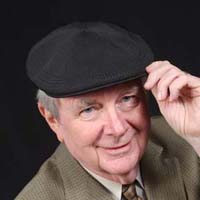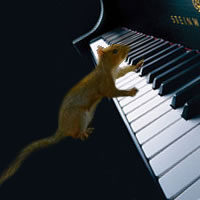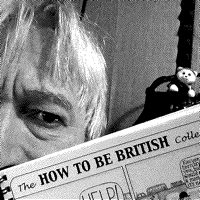 |
VO-BB - 20 YEARS OLD!
Established November 10, 2004
|
| View previous topic :: View next topic |
| Author |
Message |
Mike Harrison
M&M

Joined: 03 Nov 2007
Posts: 2029
Location: Equidistant from New York City and Philadelphia, along the NJ Shore
|
 Posted: Thu Mar 24, 2016 8:55 am Post subject: Editing: This old dog needs to learn new tricks Posted: Thu Mar 24, 2016 8:55 am Post subject: Editing: This old dog needs to learn new tricks |
 |
|
Due to what I'm told is a tendency to be fussier than I need to be, I think I'm spending more (perhaps much more) time editing narration tracks than is necessary.
Would anyone care to share the things you address and the steps (and/or time-saving tips) you use to edit your tracks?
Many thanks.
_________________
Mike
Male Voice Over Talent
I have taken leave of my sensors.
 |
|
| Back to top |
|
 |
vkuehn
DC

Joined: 24 Apr 2013
Posts: 688
Location: Vernon now calls Wisconsin home
|
 Posted: Thu Mar 24, 2016 9:38 am Post subject: Posted: Thu Mar 24, 2016 9:38 am Post subject: |
 |
|
Tee hee. Next time ask: "How High is UP?"
Any particular genre of recordings? Narrations? Radio promos? What do you do most often? |
|
| Back to top |
|
 |
Mike Harrison
M&M

Joined: 03 Nov 2007
Posts: 2029
Location: Equidistant from New York City and Philadelphia, along the NJ Shore
|
 Posted: Thu Mar 24, 2016 9:52 am Post subject: Posted: Thu Mar 24, 2016 9:52 am Post subject: |
 |
|
Narration. Long-form, tedious technical stuff.
_________________
Mike
Male Voice Over Talent
I have taken leave of my sensors.
 |
|
| Back to top |
|
 |
Bruce
Boardmeister

Joined: 06 Jun 2005
Posts: 7980
Location: Portland, OR
|
 Posted: Thu Mar 24, 2016 10:15 am Post subject: Posted: Thu Mar 24, 2016 10:15 am Post subject: |
 |
|
I've been using the same editing software, with upgrades, for 15 years now. Someday I will finish reading the manuals, because every time I venture into them I find a time saving trick.
Hey, I never said I was brilliant.
My favorite quick fix when I've got two clips perfectly spaced apart but the breaths are uneven, I apply a cross fade to that spot. It lowers total volume and smooths over the transition. It's usually seamless.
Also, if you're sending this to an end user and not an engineer/editor, I use a very light amount of gating. It keeps small, extraneous noises out of the mix but doesn't affect my read.
B
_________________
VO-BB Member #31 Enlisted June, 2005

I'm not a Zoo, but over the years I've played one on radio/TV. . |
|
| Back to top |
|
 |
vkuehn
DC

Joined: 24 Apr 2013
Posts: 688
Location: Vernon now calls Wisconsin home
|
 Posted: Thu Mar 24, 2016 10:25 am Post subject: Posted: Thu Mar 24, 2016 10:25 am Post subject: |
 |
|
Then I shall "go to school" on whatever tips you receive.
I will share a couple of things I have adopted.
Learn to do Punch and Roll. I put it off for a long time because I use a software for recording and editing that does not have a PnR feature. (Adobe Audition) I have finally figured out a method I refer to as "Four Wheel Drive Manual Transmission Punch and Roll."
Playback your recording and compare to script early, early, early in your process. It is no fun splicing in pick-ups AFTER you have denoised, equalized and other steps you even forgot that you did.
This next one I do because it fits my delivery. May not be true for lots of folks. Through the years I have developed a speech pattern that is almost boring in gain level changes. But there are obvious places here and there where a word, a syllable, a phrase will be quite a bump in the road. I use an "envelope" to bring those in line manually. (If I choose to use some compression/limiting later, the task of the later process is not all over the place.)
De-noise in small tiny increments. Use the de-noise process of more than one software. (They each seem to attack the problem differently.) I never do a pass where I ask De-Noise to remove more than 2-1/2 to 3 dB at one time.
If you have excess room tone issues, learn to use "downward expansion". Took me over ten years to finally wrap my brain around that concept.
If you need to de-click, de-crackle, etc. do it early in the process. You don't want the deviations of such noises affecting your EQ processes when you get around to them.
When I was a kid, one of the annual events at our house was "chopping cotton". You go to the field and chop out the weeds manually with a hoe. It is not glamorous. There is no magic formula. Part of long-form narration editing will always be a reminder of "chopping cotton".
Last edited by vkuehn on Thu Mar 24, 2016 7:01 pm; edited 1 time in total |
|
| Back to top |
|
 |
kgenus
Seriously Devoted

Joined: 01 Dec 2004
Posts: 889
Location: Greater NYC Area
|
 Posted: Thu Mar 24, 2016 10:51 am Post subject: Posted: Thu Mar 24, 2016 10:51 am Post subject: |
 |
|
Tip No. 1. Pay someone else to edit.
Tip No. 2. See Tip No. 1.
Repeat until complete.
_________________
Genus |
|
| Back to top |
|
 |
chrisvoco
Club 300

Joined: 14 Mar 2014
Posts: 380
Location: Local
|
 Posted: Thu Mar 24, 2016 11:15 am Post subject: Posted: Thu Mar 24, 2016 11:15 am Post subject: |
 |
|
| Quote: | | When I was a kid, one of the annual events at our house was "chopping cotton". |
Reminds me of this lady I didn't know, but she was chopping broccoli...
I don't know how this terminology translates to other daws, but the split/slide method is quick and easy: next to undesirable thingy, split the audio item, then slide the edge of the LHS left and the edge of the RHS right as appropriate. With a default teeny tiny fade for item edges, it works well and you don't have any nasty pops or bumps when the resulting data goes from zero to some other value.
In Vegas and Reaper, this is, I believe by default, the 'S' key on your keyboard; your daw will vary, I assume, but you can whang along quite quickly after a few practice runs.
And this may get me scoffed at, but: a trackball. One of the smallish Logitech ones - I find it's far quicker and more accurate to just be moving my thumb during editing than my entire hand (as with a regular mouse).
_________________
Finally, Ford stops starting to say things and starts. |
|
| Back to top |
|
 |
Bish
3.5 kHz

Joined: 22 Nov 2009
Posts: 3738
Location: Lost in the cultural wasteland of Long Island
|
 Posted: Thu Mar 24, 2016 11:40 am Post subject: Posted: Thu Mar 24, 2016 11:40 am Post subject: |
 |
|
I echo the outsource comment... however, when I do it myself, here's the process:
1) Record with dog-clicker to mark the retakes.
2) Edit BACKWARDS through the file to remove marked flubs and visually over-long pauses (backwards makes it easier to note the last take as good, and the previous as bad... multiple bad ones taken out in one hit... it's a lot faster)
3) Run iZotope de-crackle.
4) Edit forward with room-tone ready in the clipboard to get the pacing right. Anything egregious removed (clicks still there and any unwanted breaths). This done with the text for proofing.
5) Final processing.
The biggest time-saver was when I let go of editing with my eyes and just used my ears.
_________________
Bish a.k.a. Bish
Smoke me a kipper... I'll be back for breakfast.
I will not feed the trolls... I will not feed the trolls... I will not feed the trolls... I will not feed the trolls. |
|
| Back to top |
|
 |
Lee Gordon
A Zillion

Joined: 25 Jul 2008
Posts: 6868
Location: West Hartford, CT
|
 Posted: Thu Mar 24, 2016 12:42 pm Post subject: Posted: Thu Mar 24, 2016 12:42 pm Post subject: |
 |
|
I revert to the wisdom of George Whittam: "If it sounds good, it is good." Some things require perfection; others merely require acceptability. Try to train yourself to identify "good enough" and not shoot for perfection in those cases. Oh, and good luck with that. 
_________________
Lee Gordon, O.A.V.
Voice President of the United States
www.leegordonproductions.com
Twitter: @LeeGordonVoice
 |
|
| Back to top |
|
 |
Deirdre
Czarina Emeritus

Joined: 10 Nov 2004
Posts: 13024
Location: Camp Cooper
|
 Posted: Thu Mar 24, 2016 2:20 pm Post subject: Posted: Thu Mar 24, 2016 2:20 pm Post subject: |
 |
|
When I do science stuff, I record paragraph by paragraph. I read it once aloud for myself (or more if it's absurdly technical) , then record it twice. More if there are disasters.
Scratch notes onto the script.
Each paragraph has its own region.
Move to the next.
Saves my voice, saves time like mad. I'm probably 1:1.5 with this method.
_________________
DBCooperVO.com
IMDB |
|
| Back to top |
|
 |
Mandy Nelson
MMD

Joined: 07 Aug 2008
Posts: 2916
Location: Wicked Mainah
|
 Posted: Thu Mar 24, 2016 5:00 pm Post subject: Posted: Thu Mar 24, 2016 5:00 pm Post subject: |
 |
|
As one on the receiving end of audio that I'VE ASKED TO BE SENT RAW, if you are to send it raw then do some editing out of the crud but don't touch levels, gates, etc. There is nothing more annoying as an engineer as having ok audio "fixed" improperly. Otherwise, I like what everyone else is saying.
As a voice gal it depends on who I'm sending it to but I don't do very much to the audio except take out breaths. And some clicks or pops if there are any.
_________________
006 member of the Sisterhood of the Traveling Mic. Bonded by sound.
Manfillappsoc: The Mandy and Philip mutual appreciation Society. Who's in your network?
Have you seen my mic closet? ~ me to my future husband |
|
| Back to top |
|
 |
DenaliDave
Club 300

Joined: 09 Jan 2016
Posts: 307
Location: Anchorage, Alaska
|
 Posted: Thu Mar 24, 2016 5:25 pm Post subject: Posted: Thu Mar 24, 2016 5:25 pm Post subject: |
 |
|
Um...if you don't use punch-n-roll recording...
1. Take out bad takes
2. Do whatever "audio make up" you need in the DAW of your choice.
*shrug* I don't have pops, mouth noises, hums, or anything I need to deal with -- so I can't help you there.
There are a lot of plugins for your DAW that you can use to EQ or whatever....but I've found that less is more. If you can have it sound awesome going in, it'll take less time and sound better going out.
For some reason I can always tell when someone has processed the hell out of their recordings because they had bad acoustics, poor mic technique ect. It just sounds..."over processed"? Is that it?
Generally a dash of compression (like seriously, a DASH) and some slight de-essing, (Fab Filter DS is a fairly good one) ... and maybe some EQ if it needs it. I feel if you have to EQ the hell out of your tracks you might want to shop around for a better mic/pre/interface combo. Some mics just don't sound good on some people's voices, and you might be using a mic that thins you out to much or makes you sound to sibilant.
I use Twisted Wave to edit, and Logic Pro X to master. If I'm exporting to a WAV, and depending on how I feel with the dithering, I might use POW #1 with it.
As far as pacing with room tone...well, that's an option of course. I'd like to think that once you are selling a product to people that you've become practiced enough to keep a good pace. I always record extra room tone -- it's a great habit...but I don't rely on it like a crutch to excuse poor technique.
_________________
"The wise ones fashioned speech with their thought, sifting it as grain is sifted through a sieve." - Buddha
www.alaskamic.com |
|
| Back to top |
|
 |
Frank F
Fat, Old, and Sassy

Joined: 10 Nov 2004
Posts: 4421
Location: Park City, Utah
|
 Posted: Thu Mar 24, 2016 6:13 pm Post subject: Posted: Thu Mar 24, 2016 6:13 pm Post subject: |
 |
|
There is only one sure way to do less editing: make less mistakes.
Frank F
_________________
Be thankful for the bad things in life. They opened your eyes to the good things you weren't paying attention to before. email: thevoice@usa.com |
|
| Back to top |
|
 |
DenaliDave
Club 300

Joined: 09 Jan 2016
Posts: 307
Location: Anchorage, Alaska
|
 Posted: Thu Mar 24, 2016 8:32 pm Post subject: Posted: Thu Mar 24, 2016 8:32 pm Post subject: |
 |
|
Oh here's a good tip!
One thing -- I set up "templates".
I have a standard "audiobook" or long-form template for the mic/interface combo I use when doing audiobooks and long-form stuff.
Sometimes I'll tweak things slightly during a book audition, and if I do -- I make sure I save that as template too. I want to have the exact same DAW settings for later.
Because I have the template setup, all I have to do once I've edited something in Twisted Wave is drop the track into the Logic Pro template, hit "bounce" and it exports the file for me. Rinse, repeat with next section/chapter.
I find it's better to alternate between recording/editing. It's no fun to record 3+ hours or material and have to edit it all. It's much easier to record for an hour, run off and edit it and then record the next. Alternating between recording/editing also keeps me fresh an not feeling fatigued behind the mic.
I keep my settings the EXACT SAME during the entire project. The DAW templates are super helpful for that, and I write down any particulars not software related like the interface itself ie; "gain knob at 43, HPF not engaged on mic".
If you have to move your mics, use some kind of tape to mark positions and keep a tape measure around to measure heights/distances. For example, a strip of duct tape on the floor where the stand needs to be. Put a rubber band or something on the mic stand (if you have a floor stand) to mark the height.
I don't understand how when I listen to audiobooks (I listen to over 100 hours a month of other people's work by big names from Podium, Tantor, ect) -- why I can hear their pickups and replacements so easily.
I just did (literally just now) a retake of something I recorded over a week ago and I honestly can't hear any sonic difference whatsoever. I'm wearing Audio Technica ATH-M70x's which are fairly flat, VERY transparent and designed specifically for reference/mastering. Totally seamless, 10 days apart.
It blows me away that these high-profile guys in pro studios and whisper rooms with thousands of dollars of gear, sound engineers, directors, ect can't seem to achieve seamless retakes and pickups. It's not rocket science to note all the settings/variables related to your sound profile.
Consistency is KEY.
_________________
"The wise ones fashioned speech with their thought, sifting it as grain is sifted through a sieve." - Buddha
www.alaskamic.com |
|
| Back to top |
|
 |
Lee Gordon
A Zillion

Joined: 25 Jul 2008
Posts: 6868
Location: West Hartford, CT
|
 Posted: Fri Mar 25, 2016 12:39 am Post subject: Posted: Fri Mar 25, 2016 12:39 am Post subject: |
 |
|
| Frank F wrote: | make less mistakes.
|
Fewer mistakes. 
Sorry. Couldn't resist. 
_________________
Lee Gordon, O.A.V.
Voice President of the United States
www.leegordonproductions.com
Twitter: @LeeGordonVoice
 |
|
| Back to top |
|
 |
|
|
You cannot post new topics in this forum
You cannot reply to topics in this forum
You cannot edit your posts in this forum
You cannot delete your posts in this forum
You cannot vote in polls in this forum
|
Powered by phpBB © 2001, 2005 phpBB Group
|







